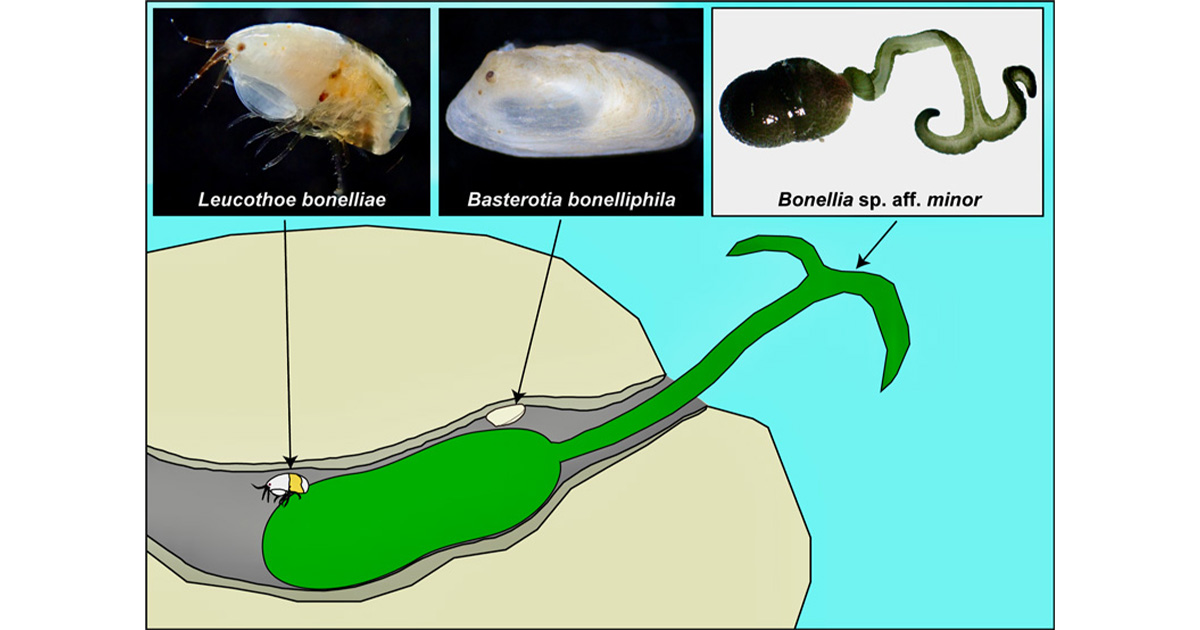Good real estate is not easy to find, even for sea creatures. Sometimes, push comes to shove, and species resort to competition or conquering before weighing the benefits of sharing an ecosystem like housemates.
There is abundant research on live-in symbionts, which share the burrows of other organisms in sand and mud on the seabed. However, studies on burrow niches in rigid substrates, such as rocks on the seabed, have been scarce.
Now, a research team led by Kyoto University has discovered the symbiotic communities of invertebrates in dead coral gravel on the shallow, warm-temperate coast of the Kii Peninsula in western Japan. New bivalve species and sideswimmer have been found to live communally with the greenish Bonellia spoonworm.
"During our nighttime scuba dives, we searched for the ribbon-like proboscises of Bonellia sp. aff. minor extending out from burrow entrances," says lead author Ryutaro Goto at KyotoU's Field Science Education and Research Center.
This resembles your pet cat trying to hide in a laundry basket, but you can see its tail sticking out.
"Observing the environment with fresh eyes and from a different angle reminded me of the possible existence of unidentified creatures lurking in familiar places," adds co-author Isao Hirabayashi.
Goto's team determined from morphological and molecular analyses that two of the three symbionts—the bivalve Basterotia bonelliphila and amphipod Leucothoe bonelliae—were new to science and deserved study of their evolutionary profiles.
Dead coral rocks are critical microhabitats for various benthic infauna, such as clams and worms. However, the biotic interactions of cryptofauna—animals existing in concealed habitats—have not received the same level of attention.
"Even seemingly barren or hostile environments that are challenging to study may provide a place to call home for a diverse range of highly adaptable organisms," reflects co-author Michitaka Shimomura.
"The symbiosis among our three burrowers highlights the deep significance of community structure and biodiversity patterns of cryptofauna, suggesting the omnipresence of symbiotic relationships in the ocean," concludes Goto.
Journal Reference:
- Ryutaro Goto, Isao Hirabayashi, Koji Seike, Momo Yamashita, Michitaka Shimomura. Living together in dead coral rocks: macrosymbiotic communities associated with Bonellia echiuran worms (Annelida: Thalassematidae: Bonelliinae), involving new commensal bivalve and amphipod species. Zoological Journal of the Linnean Society, 2023; DOI: 10.1093/zoolinnean/zlad103



